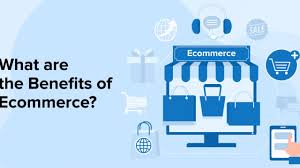Streamlining Payroll Processes for Business Success
In today’s fast-paced business world, managing payroll efficiently is crucial for ensuring that employees are paid accurately and on time. Traditional methods of payroll management, such as manual calculations and paper-based record-keeping, are not only time-consuming but also prone to human errors, which can result in costly mistakes and employee dissatisfaction.
That’s where payroll management software comes in. By automating the payroll process, businesses can save time, reduce errors, ensure compliance, and improve overall efficiency. Whether you’re running a small startup or a large corporation, the need for payroll management software has become more significant than ever.
In this blog, we will explore the reasons why payroll management software is essential for your business, its benefits, and how it can contribute to smoother business operations.
What is Payroll Management Software?
Payroll management software is a digital tool that automates the process of paying employees, calculating wages, handling deductions, and managing payroll taxes. It helps businesses track employee hours, generate payslips, calculate bonuses, and ensure compliance with tax laws.
Key Functions of Payroll Software:
- Employee records management
- Payroll processing (salaries, hourly wages, overtime)
- Tax calculations and deductions (income tax, social security, benefits)
- Generating payslips and payment reports
- Statutory compliance (e.g., labor laws, tax regulations)
- Direct deposit and bank integration
- Time and attendance tracking
- Reporting and analytics
Why Do You Need Payroll Management Software?
The need for payroll management software has increased due to several reasons. Let’s explore the key benefits that make payroll software indispensable for businesses today.
1. Accuracy and Error Reduction
Manual payroll processing is prone to human error, especially when it comes to complex calculations such as tax deductions, overtime pay, and bonuses. Even a small mistake can lead to legal issues, underpaid employees, or dissatisfied team members.
Payroll software ensures that calculations are accurate every time. It automatically handles deductions, taxes, and benefits without human intervention, significantly reducing the risk of errors. This leads to correct and timely payments, ensuring employee satisfaction and legal compliance.
2. Time and Cost Savings
Processing payroll manually is not only time-consuming but also resource-draining. For small to mid-sized businesses, this can mean spending several hours every pay period just to calculate wages, process deductions, and issue payslips.
Payroll management software automates the entire process, allowing HR teams and managers to focus on other important tasks. This automation can drastically reduce the time spent on payroll and also cut down the operational costs associated with manual payroll processing, such as administrative staff and paper costs.
3. Compliance with Tax Regulations
Staying compliant with tax regulations is critical to avoid penalties and fines. Tax laws and labor regulations frequently change, making manual compliance a difficult task. Payroll software keeps you updated with the latest tax rates, exemptions, and legal changes.
By using payroll software, you can ensure that:
- Tax deductions are calculated according to the latest rates.
- Employee payroll records are compliant with government regulations.
- Tax filings and reports are submitted on time.
This helps reduce the risk of non-compliance, keeping your business protected from legal troubles and fines.
4. Improved Employee Experience
Timely, accurate, and transparent payroll is essential for employee satisfaction. Employees want to know that they are being paid correctly and on time. With payroll software, you can provide employees with easy access to their payslips and other payroll-related information.
Some software also offers self-service portals where employees can update their personal details, view payment history, and track their benefits, improving their overall experience. This transparency helps build trust between employers and employees, leading to a more engaged workforce.
5. Data Security and Confidentiality
Payroll data is sensitive information, and it’s crucial to maintain its confidentiality. Using manual systems like spreadsheets or paper records poses a significant risk to data security. It’s easy for unauthorized individuals to access this information or for physical records to get lost or damaged.
Payroll software stores data in secure cloud-based systems, encrypting sensitive information to protect against unauthorized access, theft, or loss. Moreover, it allows you to control user permissions, ensuring that only authorized personnel have access to specific payroll data.
6. Simplifies Reporting and Analytics
Payroll management software doesn’t just automate payroll processing—it also generates detailed reports that help you track various payroll-related metrics. Whether it’s calculating labor costs, analyzing overtime trends, or reviewing tax liabilities, payroll software can provide you with insights that are impossible to obtain manually.
These reports help business owners and HR managers make data-driven decisions regarding compensation, benefits, and resource allocation. It also makes audits and financial reporting much easier.
7. Scalability and Flexibility
As your business grows, so does your workforce. Managing payroll for a small team is manageable with manual processes, but as the business expands, payroll becomes more complex. Handling payroll for multiple employees, in different locations, or with different types of contracts (full-time, part-time, contractors) can quickly become overwhelming.
Payroll management software is designed to scale with your business. Whether you have a few employees or hundreds, payroll software can handle the complexity, ensuring that the process remains smooth as you grow.
8. Integration with Other Business Systems
Most modern payroll software solutions offer seamless integration with other business tools, such as HR software, accounting software, and time and attendance systems. This integration reduces the need for double-entry data and ensures that all systems are aligned, saving time and improving accuracy.
For example, payroll software can sync with time-tracking tools to ensure that overtime and hours worked are accurately reflected in payroll calculations. Additionally, it can integrate with accounting systems to automatically post payroll expenses, reducing the chances of discrepancies.
Key Features to Look for in Payroll Management Software
When choosing payroll management software, it’s important to consider the following features to ensure you select the right one for your business:
- User-Friendly Interface: Choose software that is easy to use and requires minimal training for your HR team.
- Compliance Updates: Look for software that keeps you updated with changing tax laws and labor regulations.
- Customizable Payroll: Ensure that the software allows you to set up payroll according to your business’s specific needs (e.g., different pay schedules, overtime rules).
- Direct Deposit and Payment Options: Opt for software that supports direct deposit, making payments faster and more convenient for employees.
- Tax Filing Capabilities: Choose software that can automatically generate and file taxes on your behalf, ensuring compliance.
- Employee Self-Service: A self-service portal where employees can access their payslips, tax forms, and update personal details can improve transparency and employee satisfaction.
Conclusion: Payroll Management Software – A Must-Have for Every Business
Whether you’re a small startup or a large corporation, payroll management software is an invaluable tool that helps businesses streamline their payroll processes, ensure accuracy, maintain compliance, and improve employee satisfaction. By automating payroll tasks, you not only save time and reduce errors but also free up resources to focus on growing your business.
In a world where every minute counts, the need for efficient, accurate, and secure payroll processing is undeniable. Investing in payroll management software will not only improve operational efficiency but also contribute to a happier, more productive workforce.
Are you currently using payroll management software? What features do you find most helpful? Share your experiences with us in the comments below!

